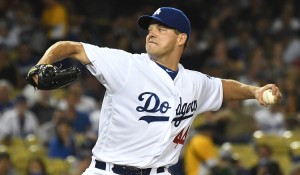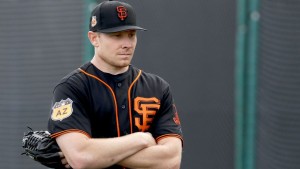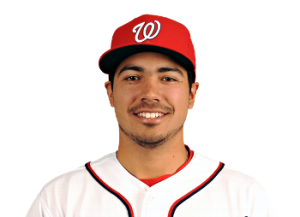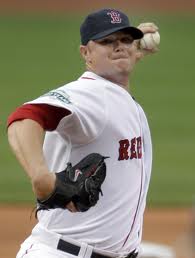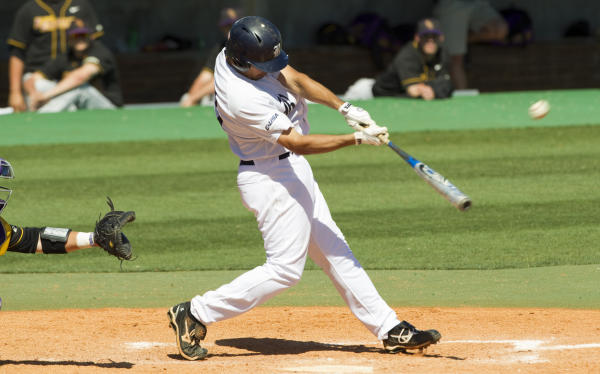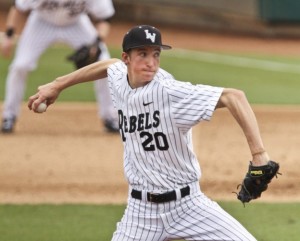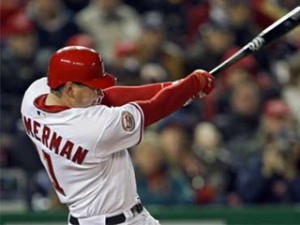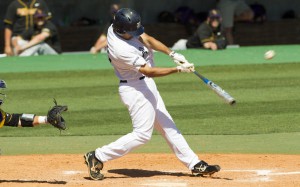
Rendon swinging away in college. Photo: Brett Coomer/Houston Chronicle via chron.com
The next (and last) in a series: previously we reviewed the 2015 season stats for the 2015 draft class, 2014 draft class, 2013 draft class and the 2012 draft class.
Web links to use while reading:
Note: in previous posts we’ve used trending up, steady and down for prospect growth analysis. For me, if a guy has debuted in the majors then he’s automatically a “success” in terms of prospect development and is an automatic “trending up” green. We’ll add in “matriculated” as a category. However, doing this analysis I’m finding myself listing guys as “trending down” even if they’ve advanced well in the system but have seemingly peaked and/or failed to reach their potential. I’ll list them as “peaked” instead of trending down as a result. Might be unfair, but when looking at guys who in some cases are entering their 6th pro season I think it is fair to pass some final judgement on their careers at this point.
It is also worth noting that the 2011 draft was the last of its kind before new CBA rules went into effect. So what you see in 2011 isn’t what we see now. Specifically:
- There used to be 50 rounds; after this draft it went down to 40. And looking at the rounds 40-50 picks, you can understand why there was little need for those additional 10 rounds.
- There used to be no caps on bonus spending; after this draft, no more massive bonus spending to sign HS prep kids in lower rounds to 1st round money.
- And because of the new caps and the tracking of limits up to the 10th round, we now see teams often making “throw away” college senior signs in the 6th-10th picks to save on bonus dollars to go over-slot for high profile picks or later draft steals. In 2011, these same guys were getting drafted in the 20th-30th round range instead.
Without further ado:
Round 1: (#6 overall) Anthony Rendon, 3B Coll Jr from Rice: slashed just .264/.344/.363in an injury plagued 2015 season after posting a 6.6 bWAR season in 2014. While clearly he remains an injury risk, the potential he shows remains as one of the top players in the league. Hopefully 2016 will see him returned to his natural position at third base, his natural batting position as 2nd in the lineup, and a return to form generally. From a prospect development perspective, he’s more than reached his goal and you have to think that some of the teams that passed on him on draft day wish they had a do over. Matriculated to Majors.
Round 1 (#23 overall): Alex Meyer, RHP Coll Jr from Kentucky: traded straight up for Denard Span in Nov 2012. Since, the Twins have brought him along slowly, having him repeat AAA and as of the end of 2015 he has just 2 2/3rds major league innings. What happened? Perhaps he’s finally getting banished to the bullpen like most development types thought always would happen. Matriculated to Majors.
Round 1-S (#34): Brian Goodwin, OF Juco from Miami Dade CC South: slashed .226/.290/.340 for Harrisburg in 2015, which represented a demotion from his 2014 assignment in AAA. He’s on the 40-man roster (having been placed there to protect him against Rule-5), but may not be there for long. Goodwin skipped High-A during that period when the Nats ownership was penalizing Potomac owners for the state of their field, and you have to wonder if it hurt his development. He’s playing winter ball this off-season, perhaps in hopes of putting his name back in the mix in this organization. Peaked at AA/AAA.
Round 2: Pick given to Philadelphia as compensation for Jayson Werth signing. The Phillies used the pick to take a HS SS out of Florida named Roman Quinn. He’s progressed nicely, slashing .306/.356/.435 this year in AA as a 22-yr old, albeit in limited action for the 4th successive year (injuries?). Its impossible to know what the Nats would have done here, had they still owned the pick, but drafting a prep SS seems unlikely. Then again, if they had this pick they might not have gone with the youngster Goodwin in the 1-S round. Who knows. Werth has totaled 9.2 bWAR in his 5 seasons here, which includes his -1.6 bWAR 2015 season dragging his totals down and nearly his whole 2nd season lost to injury. A good “trade” in terms of the player versus the draft pick for sure. Was it a good contract? Roughly 10 WAR for his $18M*5 =$90M, so about $9M/war. Not so good. We’re still not even to estimates above $7M/WAR and this contract was signed 5 years ago. An argument for another time.
Round 3: Matthew Purke, LHP draft eligible sophomore from TCU: 3-6, 4.36 ERA with 43/17 K/BB across 64 IP (20 apps, 15 starts). 3.51/3.76 FIP in High-A/AA stints. White a whirlwind season for Purke; he was released in Nov 2014 and I thought the team had cut ties. A few days later, they signed him as MLFA in a clearly pre-arranged deal to get him off the 40-man (he was one of the last of a now-banned practice; 40-man draft day deals). He jumped two levels in 2015 (from LowA through HighA to AA), ending the year as Harrisburg’s spot-starter/swing man and struggling there for the 2nd year in a row (6.35 ERA) … but perhaps not as bad as we think by virtue of the huge delta between his ERA and his FIP. More concerning is his K rate; he just doesn’t mow ’em down like he used to. What’s his projection at this point? Loogy? Long-man? I don’t know. I’m not confident that he’ll ever pan out though, so I’ll say generally Peaked at AA, since it wouldn’t surprise me at all to see him getting lit up again in AA next year and just getting released.
Round 4: Kylin Turnbull, LHP juco from Santa Barbara CC: zero IP in 2015; on the Potomac D/L the entire year. Had a relatively middling 2014 in High-A (3-3, 4.41 ERA) then never got out of the gate for 2015. He was not well heralded at the time of the draft and hasn’t really done much to impress in parts of four minor league seasons (career numbers: 15-17 with 4.53 ERA). It wouldn’t surprise me to see him get cut at the end of 2016 spring training if he can’t make the Potomac bullpen. Peaked at High-A.
Round 5: Matt Skole, 3B Coll Jr. from Georgia Tech: slashed .234/.340/.417 between AA and AAA this year, 127/82 K/BB in 465 ABs. 20 homers. Skole is now two full seasons removed from the awful 2013 injury that has more or less derailed his career. Remember; it wasn’t that long ago that Skole was the Nats minor league player of the year (2012) and when he was routinely listed as the 3rd or 4th best prospect in the system. Now he’s 26 in AAA, two years passed over in Rule 5 drafting and seemingly set to reach his 6-year MLFA barrier without really pressing for a MLB roster spot. Can you see the Nats calling him up in 2016? He’s limited to 3B on a team that (as it stands) has at least three or four of them on the MLB roster. I think he may have reached his peak unless he blows up Syracuse early next year. Peaked at AAA.
Round 6: Taylor Hill, RHP Coll Sr from Vanderbilt. 3-10 with a 5.23 ERA for Syracuse, 70/29 K/BB in 118 IP. 3.85 FIP. Also gave the Nats 12 IP across 6 appearances in early June when they had a bullpen crunch. His FIP shows that his ERA for Syracuse was misleading. I think we know what we have in Hill at this point; softer tossing 4-A guy who can throw innings and serve as a decent utility/spare part arm for the team. If you put all our SPs into one big depth chart, i’d probably put Hill somewhere around 10th in pecking order, meaning the odds of him really getting a shot at starting in the majors seems pretty slim. I think he likely sticks in his existing insurance role for at least one or two more seasons before he faces arbitration, where he’ll likely get DFA’d and see his career end. That’s no judgement on his career; as a senior sign for limited money, the fact that he made it out of short-season ball was a success, let alone getting 40-man placement and MLB innings. A great job of drafting and development. Matriculated to Majors.
Round 7: Brian Dupra, RHP Coll Sr from Notre Dame: 3-2, 3.61 ERA between AA and High-A, 43/20 in 52 relief IP. Dupra started in AA, got bounced around and demoted to Potomac in Mid-June where he stayed the rest of the season as a long-man. To me, a look at his career shows a guy who can’t compete outside of A-Ball and who is set to be 27 next spring without any success at AA or higher. I can’t see how he’s long for the organization with the number of college arms drafted recently. Look for a spring release. Still an impressive career for a guy in the same boat as Hill; senior sign, limited bonus money, little expectations. Peaked at High-A.
Round 8: Gregory Holt, RHP Coll Sr from UNC: Released 3/20/14 somewhat surprisingly after a decent season in Potomac.
Round 9: Dixon Anderson, RHP Coll Jr. from UC-Berkeley: Retired 5/14/14 after failing to get promoted and repeating Low-A for the third year.
Round 10: Manny Rodriguez, RHP Coll Sr. from Barry (FL): He was 1-3 with a 6.43 ERA for Potomac this year and was released 9/28/15 at season’s end. It is probably safe to say that the team feels like Rodriguez’ role is easily filled by a younger draftee from more recent classes.
Round 11: Caleb Ramsey, OF Coll Sr from U of Houston: slashed .287/.354/.343 with 77/45 K/BB in 429 ABs between AA and AAA. 2 homers, 13Sbs. Ramsey has quietly climbed the ladder for this team for years, but now reaches a cross roads; he doesn’t hit for enough power to justify his corner outfield spot and the Nats really don’t have any room for him in their MLB outfield. I can’t see him making a 40-man roster and is clearly AAA org guy material at this point. Look for him to play out the string in 2016 and get let go as a 6-year MLFA. Peaked at AAA.
Round 12: Blake Monar, LHP Coll Jr from Indiana: released 3/20/13 somewhat surprisingly after a decent Short-A season.
Round 13: Casey Kalenkosky 1B Coll Jr From Texas State: did not sign, returned to Texas State for senior season. Drafted in the 30th round in 2012 by Atlanta, lasted two years and released/retired.
Round 14: Cody Stubbs: LF Juco from Walters State CC (TN): did not sign, transferred to UNC and was drafted in the 8th round of 2013 by Kansas City. Hit .283 this year in HighA.
Round 15: Zachary Houchins, SS Juco from Louisberg College (NC): did not sign, transferred to ECU, drafted in the 13th round of 2014 by Los Angeles Angels. hit .253 in LowA this year.
Round 16: Deion Williams, SS from Redan HS (GA): 1-2, 5.46 ERA with 22/18 K/BB in 29.2 relief innings with Hagerstown. Williams was drafted as a SS but converted to the mound after a year or so. Since then, he’s struggled, somehow making it onto the full-season Hagerstown roster in June after sitting in XST for two months. There, he continued not to impress; his career ERA is now 6.12 across 103IP and the three lower levels of the minors. Hard to see how he’s even still on a roster at this point. Trending Down.
Round 17: Esteban Guzman, RHP Coll Jr from San Jose State University (My parents’ alma mater!): did not sign, returned to SJSU for his senior year and was never drafted again and, as far as I can tell, never played professionally. Odd. He did regress in his Sr. season, going from a 3.33 ERA to a 4.71 ERA, but to go from a 17th round pick to never playing again smells like an injury.http://mlb.mlb.com/mlb/events/afl/club.jsp?team_id=527
Round 18: Nick Lee, LHP Juco from Weatherford (TX): 3-1 with a 3.12 ERA between HighA and AA, 57/33 K/BB in 52 IP across 40 games. Lee tried to make it as a starter for a while, but now is having good success as a bullpen guy. He’s got a good BAA, but too many walks right now. But he’s holding on strong and could make a push up the system ala Matt Grace in 2016. The Nats see this as well and sent Lee to the Arizona Fall League this year. Trending Up.
Round 19: Hawtin Buchannan, RHP from Biloxi (Miss.) HS; did not sign, honored commitment to Ole Mis/Mississippi. Drafted in the 20th round in 2014 by Seattle and put up a 4.14 ERA in low-A in 2015.
Round 20: Josh Laxer, RHP from Madison (Miss.) Central HS: did not sign, also honored commitment to Ole Mis/Mississippi. Boy the guys at Ole Miss would have been mad at Mike Rizzo from this draft had things gone differently. Laxer pitched well in Short-A in 2014 but missed all of 2015 with an injury.
Round 21: Todd Simko, LHP Coll Jr. from Texas A&M-Corpus Christi: retired 7/12/13 after not making the Hagerstown squad and struggling in Short-A.
Round 22: Travis Henke RHP Coll Sr from Arkansas-Little Rock: released on 1/6/14 after putting up a 5.79 season pitching out of Potomac’s bullpen all 2013.
Round 23: Khayyan Norfork 2B Coll Sr from Tennessee: slashed .276/.336/.364 in a full season in Potomac, with 2 homers, 10 SBs and a 60/27 K/BB ratio in 341 ABs. Ended the year with a roster-filling callup to AA. Norfork’s third straight year in High-A, each time showing the same skill set; some speed, little power, decent bat but OPS figures in the .680-.700 range. He may stick around for another season to reach MLFA but i’m not sure in what role; perhaps as AA utility guy. Peaked at High-A/AA.
Round 24: Kyle Ottoson LHP Coll Jr from Arizona State: did not sign, returned for senior season and was drafted by San Diego in the 34th round in 2012. Pitched one season of short-A ball and was released.
Round 25: Erick Fernandez C Coll Sr from Georgetown: stuck around in an extreme backup mode (19 total games across three seasons), then released on 7/23/13 when the Short-A squads started to fill up after the 2013 draft. Signed as a MLFA with Pittsburgh in the 2014 off-season but couldn’t make a squad. Cut loose at the end of 2014’s spring training and out of baseball.
Round 26: Shawn Pleffner OF Coll Jr from Univ. of Tampa: slashed .269/.342/.355 with 66/41 K/BB in 394 ABs with Harrisburg. 3 homers. Another guy with local ties (born in DC), Pleffner has hung around by virtue of his decent bat (career .294 hitter) even despite the power (just 12 career homers at 1B). Will he move up the chain one more year? Clearly he’s blocked at the MLB level, and (honestly) 1B spots in AAA may be filled with the kind of spare part slugger that the Nats may be seeking as a bench option to replace Tyler Moore, so Pleffner may lose out on a roster spot by getting squeezed from both sides. Peaked at AA.
Round 27: Bobby Lucas LHP Coll Sr. from George Washington: released sometime in 2013 after struggling in LowA in 2012. The third straight pick with local ties was always a longshot being a senior sign from a small baseball program.
Round 28: Kenneth Ferrer RHP Coll Sr. from Elon University: got hammered in 7 GCL innings after getting drafted and was either released or retired prior to the 2012 season.
Round 29: Sean Cotten C Coll Sr. Tusculum College: did not sign, or if he did he never appeared or played. Odd. He had a nice senior season in school and was a college senior; maybe he just decided to hang ’em up before even trying.
Round 30: Bryan Harper LHP Coll Jr from South Carolina:2-2, 2.96 ERA 34/19 K/BB over 45 relief innings between AA and AAA. The “make the super star happy by drafting his brother” pick has turned out to be a half way decent loogy, and rightfully earned his way all the way to AAA this year. He needs to get his walks down but they’re not too bad. He’s in a position to put his name in the hat in case our cache of lefty relievers falters in 2016. Trending up.
Round 31: Josh Tobias SS from Southeast Guilford HS (NC); did not sign, honored his commitment to Florida where he played four years and was drafted in the 20th round of 2015 by Philadelphia. He hit .321 in Short-A for them so perhaps he sticks around for a bit.
Round 32: Billy Burns OF Coll Jr. from Mercer Univ. (GA): after 3 impressive seasons in our system, the Nats traded Burns straight up for Jerry Blevins in Dec of 2013. Burns debuted for Oakland in late 2014 and played a full season for Oakland in 2015, starting in CF and batting .294 with people talking about getting him Rookie of the Year votes down ballot. Burns for Blevins, who then turned in to den Dekker … perhaps the Nats didn’t really get value for the Burns pick, but also likely never would have realized who they had on their hands thanks to the full OF and names in front of him on the Nats OF prospect pecking order.
Round 33: Trey Karlen 2B Coll Sr from Univ. of Tennessee-Martin: Karlen struggled in the GCL in 2011, never appeared in 2012 and was released on 6/17/13 when the new class of draftees showed up and there was no longer room for him on the short-season squads.
Round 34: Calvin Drummond RHP Coll Jr. Univ. of San Diego (CA): did not sign, returned to U San Diego for his senior year. Looking up Drummond’s draft and collegiate history is interesting. Per his baseballcube and baseball-reference pages, Drummond was drafted no less than four times; once out of HS, once as a draft-eligible sophomore (when the Nats drafted him in 2011), then again as a junior and again as a senior. But the odd part is his history: he went to Orange Coast Juco, then transferred to San Diego where he red-shirted, pitched two decent years as a starter, then transferred again to the baseball powerhouse Arizona Christian University, where he pitched his senior year and was drafted in the 6th round by Detroit. He’s had minor league success, with more than a K/inning and a career 2.84 ERA while working his way to AA this season. Would love to hear his story.
Round 35: Alex Kreis RHP Coll Sr Jamestown College (ND): Struggled in the bullpen for Hagerstown in 2012 and never made it to a 2013 roster, either getting released or retired.
Round 36: Ben Hawkins LHP Coll Jr from Univ. of West Florida: Made the 2013 Potomac bullpen, got shelled, went back to XST after a month and was released a month later.
Round 37: Derrick Bleeker RHP Juco frm Howard College (TX): did not sign, transferred to the U of Arkansas and was drafted in the same 37th round the following year by Baltimore. He struggled for Baltimore’s low-A affiliate in 2015.
Round 38: Brett Mooneyham LHP Coll Jr from Stanford Univ. (CA): did not sign, stayed at Stanford for his Senior year and then the Nats picked him in the 3rd round of 2012. Did Mooneyham really improve his draft stock from a complete afterthought in 2011 to a 3rd round pick?
Round 39: Peter Verdin OF, Coll Jr from Univ. of Georgia: did not sign, returned to U Georgia for his senior year. Was undrafted and went unsigned after his senior season. Smells like a “favor pick,” as he was a local kid: hails from Alexandria, went to Paul VI HS in Fairfax.
Round 40: Stephen Collum OF from Cartersville HS (GA); did not sign, presumably (per baseballcube) went to Cleveland State Community College but has no college stats and was never again drafted.
Round 41: Bryce Ortega 3B Coll Sr. from Univ. of Arizona: had a decent season in 2012 for Hagerstown then either was released or retired.
Round 42: David Kerian SS from Bishop Heelan HS (IA): did not sign, honored his commitment to U of Illinois. Signed by the Nats as a 9th round senior sign in 2015.
Round 43: Mitchell Morales SS from Wellington Community HS; did not sign, went to Florida Atlantic University and was drafted 3 years later in 2014 by San Diego in the 29th round. Struggled in lower A leagues in 2015.
Round 44: Matt Snyder 1B Coll Jr Univ. of Mississippi: did not sign, returned to Ole Miss for his senior year and was a 10th round pick the following year by New York Yankees. Hit .371 for High-A this year to push his way to AA.
Round 45: Richie Mirowski RHP Coll Sr. from Oklahoma Baptist Univ: had a fantastic 2013 in Potomac, struggled making the jump to AA in 2014 and was released on 3/19/15 when it looked like he wasn’t going to make the AA team for this year. Still, a great result for a 45th round draftee.
Round 46: Tyler Thompson OF Coll JR from Univ. of Florida: did not sign, returned to Florida for his senior year. Got hurt (presumably) and was not drafted after 2012 and never played professionally.
Round 47: Timothy Montgomery LHP from Rockmart HS (GA): did not sign, took a year off, played one year at Berry College and was out of the game.
Round 48: Michael Bisenius OF Coll Jr from Wayne State College (NE): did not sign, returned to college for his senior year, never again drafted. Played on year with the Sioux City Explorers in the American Association.
Round 49: Hunter Cole OF from Dorman HS (SC), did not sign, honored his commitment to the U of Georgia. 26th round pick in 2014 by San Francisco. Hitting well so far in his career, finishing 2015 in AA with above an .800 OPS.
Round 50: Anthony Nix OF Coll Sr from Univ. of California-Riverside: hit .215 in the GCL in 2012 and was released in Jan 2013.
Trending Summary:
- Trending Up/Matriculated (4): Rendon, Hill, Harper, Lee
- Trending Steady (0): nobody
- Trending Down/Peaked (9): Goodwin, Purke, Turnbull, Skole, Dupra, Ramsey, Williams, Norfork, Pleffner
- Did Not Sign in 2011 (21): Kalenkosky, Stubbs, Houchins, Guzman, Buchanan, Laxer, Ottoson, Cotten, Tobias, Drummond, Bleeker, Mooneyham, Verdin, Collum, Kerian, Morales, Snyder, Thompson, Montgomery, Bisenius, Cole
- Released/Retired (15): Holt, Anderson, Rodriguez, Monar, Simko, Henke, Fernandez, Lucas, Ferrer, Karlen, Kreis, Hawkins, Ortega, Mirowski, Nix
- Traded (2): Meyer, Burns
Executive Summary
Well, now you know why we don’t need 50 rounds anymore. Of the original 51 total picks (three 1st rounders and a lost 2nd rounder total 51 total guys in this class), fully 21 didn’t even sign. That’s more than 40% of the draftees. So of the 29 guys who did sign, a slew remain active in the system, our 1st rounder (Rendon) has turned into a 6-win player (when healthy), we flipped two guys (Meyer, Burns) who are also MLB matriculated for other MLB players of use, and we have a couple more guys who may yet get chances (Harper, Hill, Lee). That’s not a bad return from a draft class, especially considering how many of the 20th+ rounders ended up being successful.
